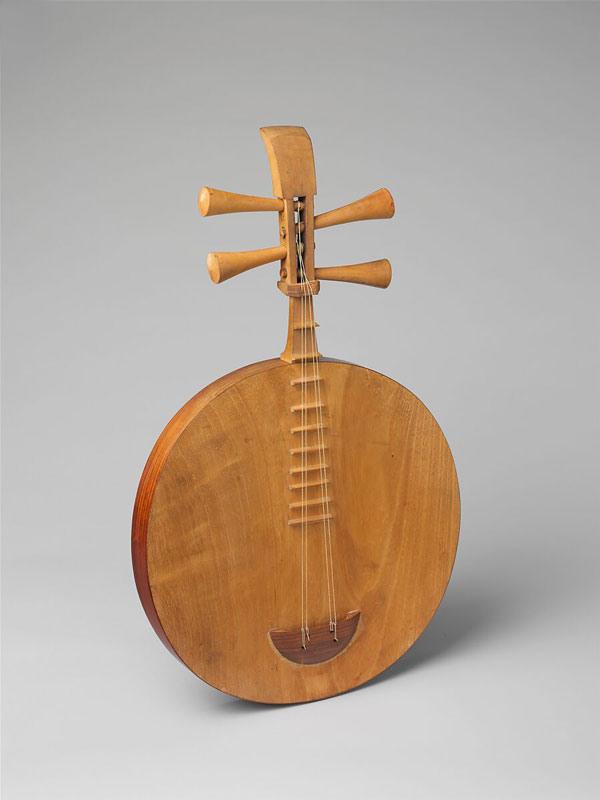The yueqin, or moon lute, is a traditional Chinese string instrument distinguished by its round, hollow soundboard, short fretted neck, and typically four strings. Known for its role as the main melodic instrument in Peking opera, the yueqin is both versatile and integral to Chinese musical heritage.
The yueqin traces its origins to the ruan, a similar string instrument developed during the Western Han dynasty (2nd century BC). By the Jin dynasty (3rd–5th centuries AD), the yueqin emerged as a distinct instrument. Its name, derived from the Chinese word for moon (“yue”), reflects the instrument’s moon-like shape. Initially, the term “yueqin” applied to all moon-shaped lutes, including the ruan, but it eventually became a separate category.
The instrument gained prominence during the Tang dynasty (618–907) and was introduced to Japan, where it flourished until the mid-19th century. The yueqin’s influence extended to Vietnam, where a similar instrument called the đàn đoản or đàn tứ is occasionally used.

The yueqin typically has a round soundboard without soundholes, though variations with octagonal shapes exist. Inside the soundbox, metal wires vibrate to enhance the instrument’s timbre. High frets on the short neck prevent fingers from touching the body, allowing greater control over intonation and tone color, though this makes chordal playing more challenging.
Most yueqin have four strings, traditionally made of silk but now commonly replaced by nylon. Some versions, especially those used in Beijing opera, have only two strings, with one serving for sympathetic resonance. Southern variants feature long necks, flexible intonation practices, and sometimes metal coils for amplification. Northern yueqin, by contrast, have short necks and bamboo components, requiring unique performance techniques.
Players use fingernails, picks, or plectrums to pluck the strings, employing tremolo and snapping techniques for tonal variation. In Beijing opera, performers use a small wooden dowel to pluck strings, playing exclusively in first position and relying on octave displacement to achieve the desired pitch range. Modern yueqin are sometimes played with guitar picks for convenience.
Unlike the ruan, which has a bridge and double soundholes, the yueqin attaches its strings directly to the frame and typically lacks visible soundholes. Its design and playing style are reminiscent of the pipa and Japanese shamisen.
Despite its prominence in traditional ensembles and Peking opera, the yueqin is not widely adopted in modern Chinese orchestras. However, its powerful volume, the loudest among Chinese plucked lutes—ensures it remains an indispensable instrument for accompanying songs and performing in diverse musical contexts.
The yueqin is also used by modern musicians to perform, rock, pop, blues, world fusion, and other genres.
Although the yueqin has been used primarily as an accompaniment instrument, talented musicians are using it as a solo instrument, including Feng Mantian, Feng Shaoxian, Siyue Shangxian, Chen Ming-chang, Fynn Cai, Sauljaljui, Jen Shyu.
(headline image: Chinese yueqin (月琴), 19th century. The Crosby Brown Collection of Musical Instruments, 1889. courtesy of The Metropolitan Museum of Art.)


